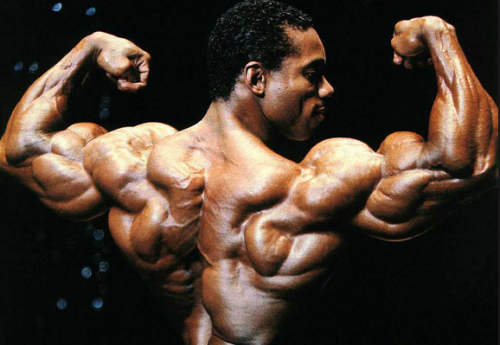The 2012 Summer Olympics were boring. Not from an athletic perspective, of course—there was plenty of excitement in that department. I’m talking about our old friends scandal and controversy. Nothing of note happened this year, unlike past Olympics, where rumors of athletes’ drug use ran rampant and competitors forfeited medals left and right after positive tests. Even the Tour de France went off without a hitch this year, and I have to admit I’m a little disappointed in all of it.
If you haven’t seen Chris Bell’s terrific documentary Bigger, Stronger, Faster, you should. It’s an in-depth exploration of performance enhancing drugs (PEDs) in America and abroad, the methods fearmongers use to demonize them, and their ubiquitous presence to endulge the public’s insatiable appetite for seeing records shattered by people who seem as though they’re beyond human (essentially because they are).
What seems odd to me—as it should to you—is the relatively pathetic state of drug testing in sports. Instead of making things truly transparent, we collect urine and blood samples and test for individual substances one at a time. Considering the sheer number of performance-enhancing agents in existence, this is tantamount to barely testing at all. It’s expensive, prohibitive, and inefficient—in addition to the fact that many of the new designer peptides aren’t detectable at all[1].
Take Marion Jones, the second fastest woman in history, who never tested positive for PEDs while competing, yet later admitting using them. Or Ben Johnson, who was caught, but candidly implied that what he actually took didn’t show up in testing. As an aside, Johnson’s “dirty” test results were a bit suspect in the first place. Pure stanozolol—or Winstrol®, as it’s commonly known—was found in his urine sample six months after the sample was taken, which is an impossible chemical result because stanozolol only appears in human urine at detectable levels through three metabolites[2-3].

They’ve got drugs that even the best testing in the world can’t detect. Thanks mysterious lab guy for keeping the Olympics dirty…
If human athletics worked like horse racing, everyone would get busted on day one, because the racing industry uses tests that can detect up to 302 substances at once with a single analysis, along with other techniques capable of detecting unknown anabolic substances[4-5]—tests and methods that would work in humans.
Since the World Anti-Doping Agency (WADA) lists only about 230 banned substances[the list], there’d be no point in having an Olympics if we used equine-based testing methods because records would no longer be broken. Tour de France times would regress to those from athletes in the 1970s, and professional athletes, unable to push their bodies to the limits necessary for the gladiatorial entertainment expectations of fans, would have much shorter careers.
What about training methods? Isn’t it an unfair advantage that some athletes have access—through governmental funding—to the best coaches and trainers in the world while other don’t? Much has been written and said about China’s Olympic rise, but when China realizes that it doesn’t have coaches capable of improving athletic performance to record-smashing levels, what do they do? They send their athletes elsewhere.
Sun Yang, the Chinese 1500 meter swimmer who crushed his own previously-held record in London—set just a few months earlier—trained in Australia with Australian coach Denis Cotterell. The total price tag for Sun’s Olympic performance? Over $1.5 million. Why should this be permitted when the wrong cold medication could get you stripped of your medals and banned?
I’ve cogitated on this problem at length. Since we’re unwilling to hold athletes and countries truly accountable for their extensive drug use and unfair training advantages, I’ve developed a solution—one that would exemplify the athletic proficiency of every nation. I call it the Genuine Olympics.
Rather than taking the best athletes from every country (or, as is common practice, poaching them from other countries and calling them yours), I think we should take a random, average cross-section of humanity from each nation. These “athletes” would then be forced to compete in designated events without any training. In fact, they won’t even be told what event they’re participating in until the day they’re scheduled to compete. It’s almost a lottery system of participation—like the Hunger Games, only far more embarrassing.
Let’s consider what the Genuine Olympics would look like. The American team would be comprised of sedentary, nearly obese “athletes.” Granted, they’d likely excel at aquatic events because they’d float well—and their senseless, aimless kicking would at least propel them to safety at the other end of the pool, alleviating the need for lifeguards (although the potential for sudden cardiac arrest would certainly be something we’d have to consider there).
Forget about gymnastics, though. It’d take hours for the American team to crawl over the pommel horse, much less vault it. They’d get winded walking from corner to corner on the floor exercise mat. And the balance beam? It’d have to be crafted from carbon fibre for strength, and titanium to provide a bit of give yet avoid shattering under the weight of our team.
England wouldn’t fare much better. Most of Europe would have trouble, although less so than their American counterparts. McDonalds and Coca-Cola could be sponsors (oh, wait…they already are), and Taco Bell would feed the Olympic village so everyone would be on the same diet and proper food choices wouldn’t provide an unfair advantage. Hell, let’s just slap Dr. Pepper and Mountain Dew logos on all the uniforms—caffeine free, of course.
Is this want we want?
I’m not coming out in favor of drugs in sports here. Far from it, to be sure. I’d love to see what advanced training methods and diet techniques can bring to the table, driving human beings to their fullest potential. I’m constantly astonished by the across-the-board increases in performance I’ve seen from athletes who use the most basic versions of Carb Back-Loading. I’d really like to see the genetic freaks of the world smash the less fortunate—who’d no longer be able to bridge the gap with male hormones, growth hormone-releasing peptides, EPO, and other nearly undetectable substances. This, however, is just about as ridiculous as my previous proposal, because nobody wants to lose, and everyone wants to be awed by superhuman feats of athleticism—which are often impossible in our natural state.
Rather than any of these absurd options, I’d be willing to accept the formation of a consortium to agree on which performance enhancing drugs can be used, and in what doses, along with guidelines for dosage depending on age. Kids under a certain age, of course (which includes pretty much all gymnasts), shouldn’t be allowed to take anything—not even topical cortisol or adrenaline ointments, which are doled out like moisturizing lotion, but aren’t banned. As athletes get older, the list of available substances would increase—which makes perfect sense, considering the fact that a teenage male’s testosterone levels easily exceed that of a thirty-something competitor.
Am I serious? Am I joking? I honestly don’t know. The state of drugs in sports is completely out of control, and some responsible agency should intervene at this point. I know of a local coach who all but forces his bikini competitors—who should be the epitome of femininity—to take testosterone injections if they want to succeed. Scrawny male physique competitors ask my advice, then proceed to give me a pharmaceutical laundry list of what they’re currently using—a veritable catalog of drugs that would rival that of any top-tier athlete in any sport. It’s insane, and it makes me sick.
These people—even the youngest of Olympic athletes—destroy their bodies and shorten their enjoyable lifespan for a moment in the spotlight, often competing within one painfully short window of time, and then never again. Who among us, however, wants to spend their athletic retirement tethered to a dialysis machine or on the waiting list for a liver transplant?
Think about it, though. Isn’t this what our medical system promotes every day? Where’s the message to not take drugs? We hand them out like grain at a feedlot for everything from diabetes to restless leg syndrome (which is what, exactly?). It’s not easy for human beings to reach the levels of obesity we see in the United States today, but it’s made possible by drugs like metformin that allow overweight people to become exceptionally obese. You once had to pay a nickel to see these people at the carnival. Now all you have to do is park in front of any Walmart for ten minutes or less.
If you can look in the mirror and see this, I’m sorry. I sincerely am, because you’ve been fed lies and food that have forced you to become fat, and you’ve been prescribed pills that have made you even fatter.
We love drugs.

Too creative? Too much energy? Short attention span? Must be ADHD…or the 12 hours a day he spends glued to the video game console.
It’s a fact, but it’s one we have to change. Fuck the Olympics. Fuck the Tour de France. Those people at least know the risks they run in taking the drugs they take—a decision they’ve made consciously, with full consent (except, perhaps, for the pre-teen gymnast who simply does as she’s told). We need to fight against the kind of drug use that actually has the potential to destroy our society.
The American public, in contrast to our professional athletes, takes substances they know nothing about—educated by little more than television advertising promising relief from whatever ails them. We pop pills that can kill us with the first dose. The commercials even issue warnings about side effects: “…and in some rare cases, death may occur…”
Wait, what? Death may occur? And we’re worried about testosterone in the Olympics? A drug proven to decrease depression[6-8]? (Sorry kids, roid rage is a myth[9-11]; the truth: if you have anger management problems before taking testosterone, then you’re a stronger dude with anger management issues after taking testosterone[12]—no mystery here.)
We even turn our children into pill addicts, keeping them hopped up on crystal meth marketed as ADHD medication. By the way, it’s mandated as unethical to do clinical tests of these drugs on kids, but it’s seemingly kosher to hand their parents a bottle, telling them to have these same kids take junkie-level doses every day.
We also load teenage girls with estrogen and progesterone—both of which are steroids that increase the risk of obesity and breast cancer—if they have a single uncomfortable menses. This, America, is ridiculous.
Vice President Joseph Biden said, “There’s something simply un-American about this,” when decrying the use of anabolics in Major League Baseball. He’s right, but not in the way he intended. What actually is American is using pharmaceuticals to help us achieve exceptional sickness, obesity, lethargy, and states of mental retardation, allowing us to perform at subhuman levels not possible without drugs.
America leads the way internationally in terms of its pervasively pill-popping public, but we castigate athletes who use drugs to make themselves superhuman. This, of course, goes great lengths to feed the international perception that we’re a nation of self-righteous hypocrites.
We act in good faith on this premise every four years during the Olympics. We were all “appalled” when Chinese swimmer Ye Shiwen came seemingly out of nowhere to smash a world record (an interesting analysis of why this wasn’t suspicious can be found here). We let things slide several years ago, however, when Carl Lewis tested positive for banned substances that should have prevented him from competing in the Olympics. After admitting that he failed three drug tests for the 1988 Summer Olympics, Lewis’ reaction summed up our national attitude when it comes to our own use:
“Who cares?”
Let’s drop this myopic obsession with drugs in sports. It’s distracting us. Let’s stop spending millions of dollars testing a few people who’ve willingly dedicated their lives to stretching the extremes of human performance. Instead, let’s focus our attention on the real drug abuse in America, and use our resources to help “regular” people lose weight, eat properly, and move—to perform the simple act of walking—even if it’s just the extra distance from the outskirts of the parking lot to the front door of Walmart.
References (click to expand)
- Barroso O, Mazzoni I, Rabin O. Hormone abuse in sports: the antidoping perspective. Asian J Androl. 2008 May;10(3):391-402. Review.
- Pozo OJ, Van Eenoo P, Deventer K, Lootens L, Grimalt S, Sancho JV, Hernández F, Meuleman P, Leroux-Roels G, Delbeke FT. Detection and structural investigation of metabolites of stanozolol in human urine by liquid chromatography tandem mass spectrometry. Steroids. 2009 Oct;74(10-11):837-52.
- Salvador JP, Sánchez-Baeza F, Marco MP. Simultaneous immunochemical detection of stanozolol and the main human metabolite, 3′-hydroxy-stanozolol, in urine and serum samples. Anal Biochem. 2008 May 15;376(2):221-8.
- Liu Y, Uboh CE, Soma LR, Li X, Guan F, You Y, Chen JW. Efficient use of retention time for the analysis of 302 drugs in equine plasma by liquid chromatography-MS/MS with scheduled multiple reaction monitoring and instant library searching for doping control. Anal Chem. 2011 Sep 1;83(17):6834-41.
- Liu Y, Uboh CE, Soma LR, Li X, Guan F, You Y, Rudy JA, Chen JW. Detection and confirmation of 60 anabolic and androgenic steroids in equine plasma by liquid chromatography-tandem mass spectrometry with instant library searching. Drug Test Anal. 2011 Jan;3(1):54-67.
- Khera M, Bhattacharya RK, Blick G, Kushner H, Nguyen D, Miner MM. The effect of testosterone supplementation on depression symptoms in hypogonadal men from the Testim Registry in the US (TRiUS). Aging Male. 2012 Mar;15(1):14-21.
- Wang C, Alexander G, Berman N, Salehian B, Davidson T, McDonald V, Steiner B, Hull L, Callegari C, Swerdloff RS. Testosterone replacement therapy improves mood in hypogonadal men–a clinical research center study. J Clin Endocrinol Metab. 1996 Oct;81(10):3578-83.
- Wang C, Swerdloff RS, Iranmanesh A, Dobs A, Snyder PJ, Cunningham G, Matsumoto AM, Weber T, Berman N; Testosterone Gel Study Group. Transdermal testosterone gel improves sexual function, mood, muscle strength, and body composition parameters in hypogonadal men. J Clin Endocrinol Metab. 2000 Aug;85(8):2839-53.
- Anderson RA, Bancroft J, Wu FC. The effects of exogenous testosterone on sexuality and mood of normal men. J Clin Endocrinol Metab. 1992 Dec;75(6):1503-7.
- O’Connor DB, Archer J, Wu FC. Effects of testosterone on mood, aggression, and sexual behavior in young men: a double-blind, placebo-controlled, cross-over study. J Clin Endocrinol Metab. 2004 Jun;89(6):2837-45.
- Tricker R, Casaburi R, Storer TW, Clevenger B, Berman N, Shirazi A, Bhasin S. The effects of supraphysiological doses of testosterone on angry behavior in healthy eugonadal men–a clinical research center study. J Clin Endocrinol Metab. 1996 Oct;81(10):3754-8.
- O’Connor DB, Archer J, Hair WM, Wu FC. Exogenous testosterone, aggression, and mood in eugonadal and hypogonadal men. Physiol Behav. 2002 Apr 1;75(4):557-66.











Recent Comments